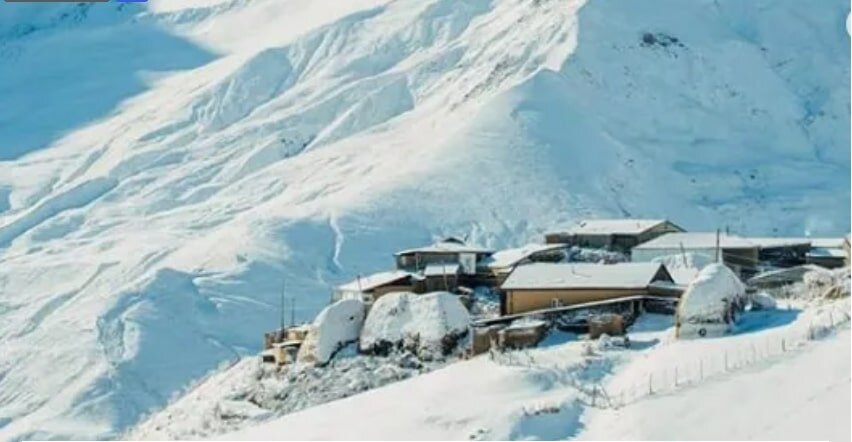It’s Cold, Not Hot, Extremes That Are on the Rise
/Despite the hullabaloo about hot weather extremes in the form of heat waves and drought, little attention has been paid to cold weather extremes by the mainstream media or the IPCC (Intergovernmental Panel on Climate Change), whose assessment reports are the voice of authority for climate science. Yet, though few people know it, cold extremes appear to be on the rise – in contrast to weather extremes in general which are trending downward rather than upward, if at all.
The WMO (World Meteorological Organization) does at least acknowledge the existence of cold weather extremes, but has no explanation for their origin nor their rising frequency. Cold extremes include prolonged cold spells, unusually heavy snowfalls and longer winter seasons. In a world obsessed with global warming, such events go almost unnoticed.
One person who has noticed is Madhav Khandekar, who has a PhD in meteorology and was formerly a research scientist at Environment Canada as well as an expert reviewer for the Fourth Assessment Report of the IPCC. Although much of Khandekar’s work on cold extremes has focused on Canada, he has also catalogued cold weather events worldwide. In remarking recently that extreme weather – both hot and cold – is part of natural climate variability, Khandekar points out:
“Even when the earth’s climate was cooling down during the 1945-77 period there were as many extreme weather events as there are now.”
Before we look at recent cold weather extremes, it’s important to distinguish between climate and weather. Weather is what’s predicted in daily forecasts which describe short-term changes in atmospheric conditions. Climate, on the other hand, is a long-term average of the weather over an extended period of time, typically 30 years.
Recurring frigid global temperatures over the past 15 years have been documented by Khandekar, the WMO and the blog Electroverse. The northern winter of 2005-06 was exceptionally cold over most of western and northeastern Europe, while in May 2006 during the southern winter, South Africa reported 54 cold weather records. The winter of 2009-10 was equally brutal: Scotland suffered some of the bitterest winter months in almost 100 years; Siberia witnessed perhaps its coldest winter ever; and Beijing saw its coldest day in 50 years.
Northern climes experienced abnormally low temperatures again in the winters of 2014-15, 2015-16 and 2018-2019. The period from January to March 2015 was the coldest in the northeastern U.S. since 1895, as shown in the figure below. In January 2016, eastern China froze as far south as Thailand, a very rare event. And in early 2019, bone-chilling cold persisted for months over much of the north-central U.S. and western Canada.
During the current southern winter and northern summer, cold temperature records have been smashed all over the globe. The Australian island state of Tasmania recorded its coldest ever winter minimum, exceeding the previous low by 1.2 degrees Celsius (2.2 degrees Fahrenheit); Norway endured its coldest July in 50 years; neighboring Sweden shivered through its coldest summer since 1962; and Russia was also anomalously cold.
Snowfalls around the planet show the same pattern, in contrast to the climate change narrative that predicted snow would disappear in a warming world. In 2007, snow fell in Buenos Aires, Argentina for the first time since 1918. In the winter of 2009-10, record snowfall blanketed the entire mid-Atlantic coast of the U.S. in an event called Snowmaggedon. Extremely heavy snow that fell in the Panjshir Valley of Afghanistan in February 2015 killed over 200 people. In the winter of 2017-18, eastern Ireland had its heaviest snowfalls for more than 50 years with totals exceeding 50 cm (20 inches).
In the southern winter this year, massive snowstorms covered much of Patagonia in more than 150 cm (60 inches) of snow, and buried at least 100,000 sheep and 5,000 cattle alive. Snowfalls not seen for decades occurred in other parts of South America, and in South Africa, southeastern Australia and New Zealand. In the chilly northern summer mentioned above, monster snowdrifts almost obliterated the southern Russian village of Kurush.
Despite the mainstream media’s assertion that cold weather extremes are caused by climate change, Khandekar says such an explanation lacks scientific credibility. He links colder and snowier-than-normal winters in North America not to global warming, but to the naturally occurring North Atlantic Oscillation and Pacific Decadal Oscillation, and those in Europe to the current slowdown in solar activity. The IPCC and WMO are largely silent on the issue.
Next: Upcoming Grand Solar Minimum Could Wipe Out Global Warming for Decades







